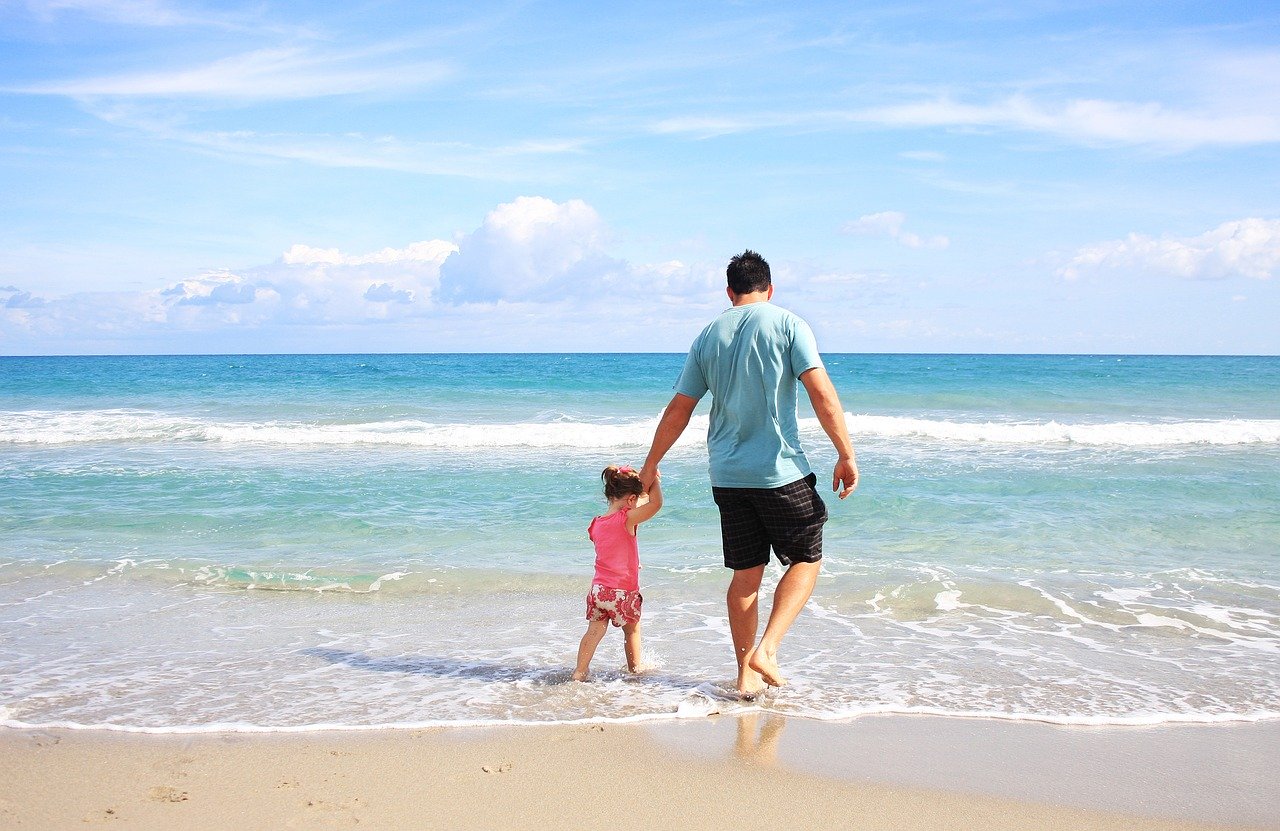Lifestyle
5 Tips to Help Your Family Spend More Time Outdoors

Do you ever feel like your family is cooped up indoors? As if your entire existence is taking place between four walls? If so, you might want to rethink how you’re spending your time. And getting outdoors should be a major priority.
Powerful Reasons to Spend More Time in Nature
The push to spend time outside is more important than you think. It’s a concept that’s backed by research and science. Below are a few reasons why your family should be outside more often:
- Improves vitality. Studies show that spending just 20 minutes per day in vegetation-rich nature improves vitality and makes you more enthusiastic about life.
- Lower risk of depression. Those who live within a mile of a park or wooded area are known to experience less depression and anxiety than those who live far away from natural spaces.
- Better immunity. A series of studies have shown that people who spend time in natural surroundings usually have increased immune function, compared to those who spend most of their time indoors.
- More happiness. Those who have participated in the 30×30 Nature Challenge (spend 30 minutes in nature every day for 30 days) report significant increases in happiness and overall well-being.
- Improved creativity. Research shows that people are up to 50 percent more creative after spending a few days hiking on trails. Creativity is shown to peak after roughly three days of being immersed in nature.
- Better cognitive functioning. Performance on memory and attention tests improves by 20 percent after individuals took a walk outside through an arboretum. (The same can’t be said of walking down a busy street.)
And that’s only the start! Piles of additional research support benefits related to stress reduction, lower anxiety, and better heart health. It’s pretty simple: If you want to live your best life, you need to spend time outside.
5 Tips to Help Your Family Get Outdoors
It doesn’t matter if you live in the heart of New York City or in the middle of Montana, there are ample opportunities to get your family outside and in nature. Here are a few ideas:
- Go Hiking
You might assume that you need to live within a stone’s throw of a national park in order to enjoy hiking on a regular basis, but the truth is that most Americans are just a short drive away from some sort of state park or hiking trail. Use a resource like TrailLink to find the hiking trails nearest you.
- Go Camping
A quick two- or three-hour hike is fun, but if you want to get the full benefits of being outdoors, you should plan a camping trip. There’s something about being outside all day – building a campfire, cooking your own meals, taking hikes, telling stories, and looking up at the stars – that really brings a family together and makes for a unique experience.
- Plan an RV Trip
Not much for camping on the ground? Plan an RV trip and enjoy traveling in luxury. There are thousands of RV parks around the country – many in national and state parks – where you can spend time outside and then sleep in the warmth and comfort of your RV.
- Play Sports
If you have young kids, sports can be an awesome way to get them outside more often. Whether it’s playing a team sport like baseball, soccer, or football, or an individual sport like tennis or golf, there are plenty of options to choose from.
- Watch the Sky
You can have some really meaningful moments as a family if you’re willing to wake up early or stay up late. Whether it’s watching the sunrise, watching the sunset, or doing some form of star gazing, there’s something powerful and awe-inspiring about looking up and studying the sky.
Go Beyond Your Comfort Zone
It’s easy for your family to spend the weekend in your pajamas watching cartoons and Netflix, but is that really the kind of lifestyle you want? You can only stay cooped up inside for so long. Your family – and especially your children – need to explore the world and make memories. And what better way to do that than to move beyond your comfort zone and spend time hiking, camping, and traveling outdoors?
Bring your family together and let this article serve as a launching point for bigger and better ideas. Because when you’re willing to try new things, you never know where the experience will take you.
Lifestyle
From Wealth to Fields: A Billionaire’s Commitment to Small Farmers

In recent years, billionaire Stefan Soloviev has transitioned from the world of New York real estate to the fertile farmlands of the American West.
His journey from urban wealth to rural development showcases a unique dedication to revitalizing small farming communities and transforming the agricultural landscape.
A New Vision for Agriculture
Stefan Soloviev, son of the late real estate tycoon Sheldon Solow, has amassed a considerable amount of farmland across Colorado, Kansas, and New Mexico. Soloviev’s agricultural enterprise, Crossroads Agriculture, spans over 400,000 acres, making him one of the largest landowners in the United States.
This substantial investment is not merely a financial venture; it represents a commitment to supporting and empowering small farmers in these regions.
Soloviev’s approach to farming is characterized by his desire to move away from competitive practices that often leave small farmers struggling. Instead, he emphasizes collaboration and sustainability.
By leveraging his resources, Soloviev aims to create a farming environment where smallholders can thrive alongside larger operations. This philosophy is particularly evident in his strategic acquisition of the San Luis & Rio Grande Railroad, a critical transportation link for agricultural products in the region.
Revitalizing Rural Communities
Soloviev’s impact extends beyond farmland acquisition. His purchase of the San Luis & Rio Grande Railroad at a bankruptcy auction for $10.7 million highlights his broader vision for the agricultural sector.
This railroad, previously owned by Iowa Pacific Holdings, connects the San Luis Valley to the national rail network, facilitating the efficient transport of goods and boosting local economies.
The acquisition is seen as a positive development for the San Luis Valley, with Soloviev’s Colorado Pacific Railroad expected to be more community-focused and supportive of local initiatives compared to the previous owners. This includes potential cooperation with local recreational projects, such as the proposed Heart of the Valley Trail, which aims to integrate rail and trail use for community benefit.
Soloviev’s dedication to the region is also reflected in his willingness to work with local stakeholders to address community needs. His approach contrasts with more traditional, profit-driven business models and underscores his commitment to fostering a sustainable and inclusive agricultural ecosystem.
Building a Sustainable Future
Soloviev’s investment in the Colorado Pacific Railroad and the broader agricultural infrastructure is part of a long-term vision to create a more resilient and sustainable farming community. By improving transportation networks and providing support to small farmers, he hopes to mitigate some of the challenges these farmers face, such as market access and transportation costs.
Moreover, Soloviev’s initiatives are seen as a way to preserve and enhance the rural way of life, which is increasingly threatened by industrial farming and urban encroachment. His efforts to balance economic viability with environmental stewardship demonstrate a nuanced understanding of the complexities of modern agriculture.
In conclusion, Stefan Soloviev’s transition from urban real estate mogul to a champion of small farmers is a testament to his innovative and community-oriented approach.
His significant investments in farmland and infrastructure, coupled with a commitment to sustainability and local engagement, are paving the way for a brighter future for small farmers in Colorado and beyond. Through his efforts, Soloviev is not only transforming
the agricultural landscape but also setting a precedent for how wealth and resources can be used to foster positive change in rural communities.
-

 Tech3 years ago
Tech3 years agoEffuel Reviews (2021) – Effuel ECO OBD2 Saves Fuel, and Reduce Gas Cost? Effuel Customer Reviews
-

 Tech5 years ago
Tech5 years agoBosch Power Tools India Launches ‘Cordless Matlab Bosch’ Campaign to Demonstrate the Power of Cordless
-

 Lifestyle5 years ago
Lifestyle5 years agoCatholic Cases App brings Church’s Moral Teachings to Androids and iPhones
-

 Lifestyle3 years ago
Lifestyle3 years agoEast Side Hype x Billionaire Boys Club. Hottest New Streetwear Releases in Utah.
-

 Tech6 years ago
Tech6 years agoCloud Buyers & Investors to Profit in the Future
-

 Lifestyle4 years ago
Lifestyle4 years agoThe Midas of Cosmetic Dermatology: Dr. Simon Ourian
-

 Health5 years ago
Health5 years agoCBDistillery Review: Is it a scam?
-

 Entertainment5 years ago
Entertainment5 years agoAvengers Endgame now Available on 123Movies for Download & Streaming for Free
